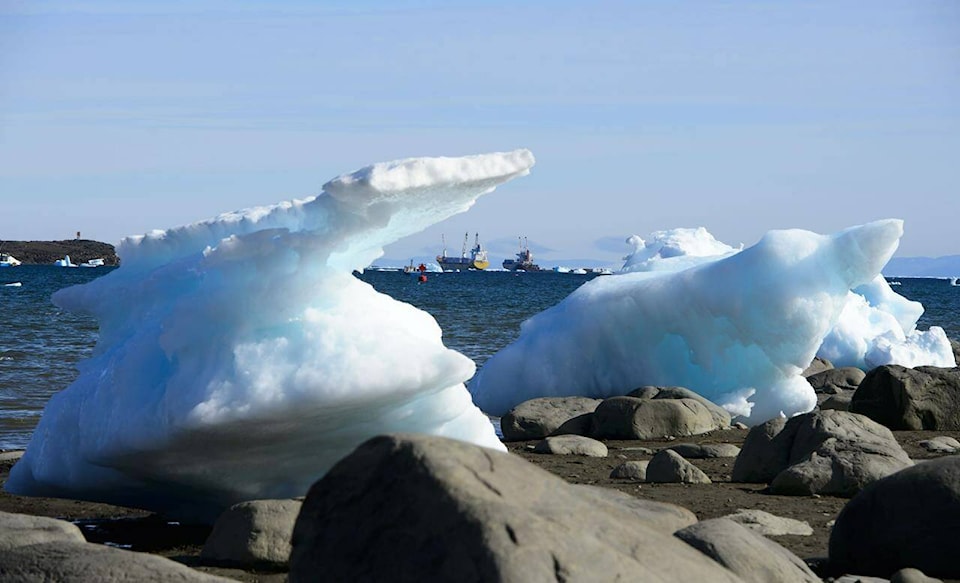The international body that regulates shipping has approved new environmental protections for the Canadian Arctic that are expected to reduce emissions that hasten the melting of Arctic sea ice.
At meetings that ended Friday, the International Maritime Organization has agreed with a proposal from Canada that will create a so-called Emissions Control Area in Canada’s northern waters.
“The (Marine Environment Protection Committee) has approved the establishment of… new Emission Control Areas in Canadian Arctic waters,” a release from the UN body said Friday.
The committee is expected to give the final OK to the measures at its next meeting in the fall. They will enter into force 16 months after that.
The new rules will require ships in the Arctic to use fuel that contains less than .1 per cent sulphur, a further restriction to those already in place around the use of heavy fuel oil. That will reduce the amount of contaminants such as sulphur dioxide and nitrogen dioxide that enter the environment.
It’s most noticeable effect, however, may be to reduce the amount of black carbon emitted by vessels sailing the North.
Black carbon is a sooty byproduct of high-sulphur fuels that falls onto sea ice, darkening its surface and speeding its melt. Black carbon is estimated to be responsible for about 20 per cent of the climate impacts from global shipping.
After its final approval, the move will bring rules for the Arctic in line with those in place for all other Canadian waters.
All Canadian waters south of 60 degrees latitude are already listed as Emission Control Areas.
Switching fuels will create a one-time cost to shippers of about $3.3 million, according to documents from the federal government. That breaks down to about $41 per household if all those costs are passed along.
The Inuit Circumpolar Council, which represents Inuit people around the Arctic, applauded the announcement.
Council vice-chairwoman Lisa Qiluqqi Koperqualuk said black carbon emissions in the Arctic doubled between 2015 and 2021.
“All other ocean areas in Canada below 60 degrees have been protected by an Emission Control Area since 2013,” she said. “We welcome this initiative by Canada to provide equal protections for our Inuit homeland.”
-By Bob Weber, The Canadian Press
